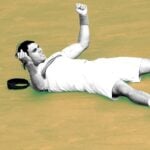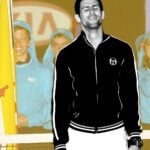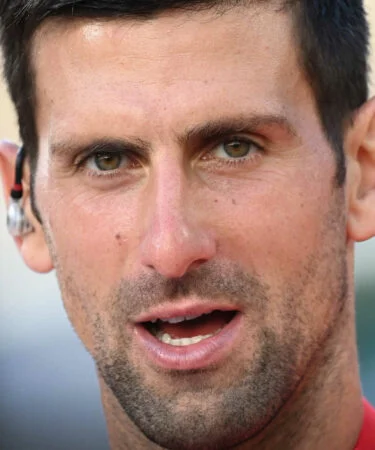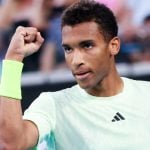June 11, 2012: Nadal and Djokovic complete two-day Roland-Garros final
On this day in tennis history, a two-day Roland-Garros final played out to its almost inevitable conclusion. Find out how
 Nadal Djokovic OTD 11_06
Nadal Djokovic OTD 11_06
What happened exactly
On this day, Monday, June 11, 2012, Rafael Nadal and Novak Djokovic finished their Roland-Garros final, which had been delayed by rain on the previous day while the Spaniard led by two sets to one (6-4, 6-3, 2-6, 1-2). In front of a whole different audience, Nadal defeated Djokovic, 7-5 in the fourth set, to win his seventh Roland-Garros crown, beating Bjorn Borg’s Open era record of six.
The players involved: Rafael Nadal and Novak Djokovic
In June 2012, Rafael Nadal was only 25, but his achievements had already secured him a chapter in tennis history books. His clay court records were outstanding. Almost unbeatable on his favourite surface, he had won the French Open at his first attempt, in 2005 (defeating Mariano Puerta in the final, 6-7, 6-3, 6-1, 7-5), and since then, he had triumphed at Roland-Garros five times, in 2006, 2007, 2008, 2010 and 2011, holding a 45-1 record in Paris. Apart from Robin Soderling, who beat him in the 2009 fourth round (6-2, 6-7, 6-4, 7-6), no one had managed to win more than one set against Nadal at Roland-Garros. He held a record of 81 consecutive matches won on red dirt, on which he had already won 32 tournaments. Besides, after his second Grand Slam triumph, he improved his game, making it more aggressive, to make it more effective on fast surfaces. Defeated by Roger Federer in the Wimbledon final in 2006 and 2007, he eventually claimed the title at the All England in 2008, edging his Swiss rival in one of the greatest matches in tennis history (6-4, 6-4, 6-7, 6-7, 9-7). He then became world No 1 for the first time, interrupting Federer’s 237-week reign.
In 2009, he claimed a first Grand Slam title on hard court at the Australian Open, where he survived a 5-hour semi-final against Fernando Verdasco (6-7, 6-4, 7-6, 6-7, 6-4), before battling five sets to beat Federer in the final (7-5, 3-6, 7-6, 3-6, 6-2). Injuries troubled him in the following twelve months, but he came back stronger than ever at the spring of 2010, taking his revenge against Soderling in the Roland-Garros final (6-4, 6-2, 6-4), before claiming a second Wimbledon title, beating Tomas Berdych in straight sets in the final (6-3, 7-5, 6-4). In September 2010, he achieved the career Grand Slam by defeating Novak Djokovic in the US Open final (6-4, 5-7, 6-4, 6-2), and at that time, it seemed that he was going to dominate the game, but in 2011, the Serbian increased his level and became the new leader on the Tour. Defeated by Djokovic in the finals of Indian Wells, Miami, Madrid, Rome, Wimbledon and the US Open, the Spaniard saved his season by by winning Roland-Garros for the sixth time, defeating Federer in the final once again (7-5, 7-6, 5-7, 6-1). In the final of the 2012 Australian Open, Nadal was edged once again by Djokovic (5-7, 6-4, 6-2, 6-7, 7-5), and it really looked like the Serbian had taken the advantage in the rivalry.
Novak Djokovic was born in 1987. He entered the top 100 in 2005, finishing the year as world No 83. In 2006, he made himself famous by reaching the quarter-finals at Roland-Garros while ranked only No 63, after he beat world No 9 Fernando Gonzalez in the second round. His breakthrough year was 2007, when he reached the semi-finals at Roland-Garros and Wimbledon (stopped each time by Rafael Nadal) before making his way into the US Open final where he was defeated by Roger Federer (7-6, 7-6, 6-4). At the start of 2008, he triumphed for the first time in a major tournament, defeating Jo-Wilfried Tsonga in the Australian Open final (4-6, 6-4, 6-3, 7-6). Djokovic then remained world No 3 in the next three years, often reaching the last rounds of major events where Federer and Nadal kept preventing him from adding more major crowns to his list of achievements. Things changed in 2011, when Djokovic played a close to perfect first half of the season. Triumphing at the Australian Open at Andy Murray’s expense (6-4, 6-2, 6-3), he remained undefeated for 42 matches, until Roger Federer beat him in the semi-finals of Roland-Garros (7-6, 6-3, 3-6, 7-6). Nevertheless, the Serbian then claimed the titles at Wimbledon and the US Open, each time defeating Nadal in the final.

Having won 10 tournaments throughout the year, he achieved one of the greatest seasons in tennis history. At the start of 2012, as the tennis world was wondering if he was going to be able to maintain that level, he won the longest final in Grand Slam history, defeating Nadal in the Australian Open after five hours and 53 minutes of extraordinary tennis (5-7, 6-4, 6-2, 6-7, 7-5). His goal was now to add the last major tournament missing from his list of achievements: Roland-Garros, kingdom of his rival, Rafael Nadal.
The place: Roland-Garros, Paris
The story took place in Roland-Garros, Paris. The stadium, located in the west of Paris at the edge of the Bois de Boulogne forest, had been hosting the French Grand Slam since 1928. It was the first and now only Grand Slam to be played on clay, the slowest surface, which made it the hardest tournament to win from a physical perspective. Since 2005, Rafael Nadal had won the tournament six times, equaling Bjorn Borg’s record, while Novak Djokovic had never reached the final in the last Grand Slam missing from his list of achievements.
The facts
Even for Rafael Nadal, who had won six out of the last seven editions of the tournament, every Roland-Garros final was special but in 2012, stakes were particularly high. In case of victory, with a seventh title, the Spaniard would beat Bjorn Borg’s record, which had stood since 1981 and had been considered as unbeatable by most of the experts. On the other side of the net stood his biggest rival at the time, the world No 1, Novak Djokovic, who was playing his first Roland-Garros final, and who would not only complete the career Grand Slam if he was to win, but who would also become the first man since Rod Laver to win four consecutive major tournaments.
In 2011, the Serbian had defeated Nadal seven times in a row, and, above all, he had even managed to beat him twice on red dirt, in both Madrid and Rome. However, in 2012, after having lost against Djokovic in the Australian Open final, the Spaniard had dominated the clay-court season like in the good old days, defeating his rival in straight sets in Monte-Carlo (6-3, 6-1) and Rome (7-5, 6-3). At Roland-Garros, Nadal had reached the final without dropping a single set (even giving his friend Juan Monaco an impressive, 6-2, 6-0, 6-0 loss in the fourth round), while the world No 1 had to battle five sets twice: in the fourth round against Andreas Seppi (4-6, 6-7, 6-3, 7-5, 6-3), then in the quarter-finals, where he saved four match points against Jo-Wilfried Tsonga (6-1, 5-7, 5-7, 7-6, 6-1). It had been an long time since Nadal had not been unanimously considered as the favourite in a clash against Nole.

When the final started, on Sunday, the six-time Roland-Garros champion took control of the match, and soon, he was up 6-4, 5-3. It seemed that nothing could prevent him from an easy win, when the final was interrupted by rain for half an hour. However, that break didn’t really help Djokovic, who came back on court only to lose the set (6-3) and to suffer an early break in the third set – but the world No 1 didn’t intend to give up. He could feel that the constant drizzle in which they were playing was going in his favour: on this heavy clay, with wet balls, Nadal’s topspin suddenly wasn’t hurting as bad as before. Djokovic won six consecutive games to take the set, 6-2, while the Spaniard asked several times the officials to stop the play. Nadal’s wish was only granted around 7pm, but not before he had already lost his serve in the fourth set, and the match was interrupted at 2-1 for Djokovic in the fourth set. The rain didn’t stop, and for the first time since 1973, the Roland-Garros men’s final couldn’t be finished on Sunday.
On the following day, Nadal and Djokovic came back on court in front of a whole new audience – to avoid having a Roland-Garros final played in front of empty stands, the organisers had decided to give away free tickets to the members of the French Tennis Federation. The Spaniard broke back and regained control of the rallies to seal his seventh Roland-Garros title, 7-5. Now holding the record of the most titles claimed in Paris, Nadal, when asked if he considered himself as the greatest clay-court player of all-time, still said that he didn’t know “if I am the best or not. I’m not the right one to say that.”
What next
Although Nadal’s achievement was already amazing, the Spaniard would win Roland-Garros seven more times, taking his collection of French Open trophies to 14.
Novak Djokovic would achieve the feat of completing the career Grand Slam and winning four consecutive major titles in Paris, in 2016, defeating Andy Murray in the final (3-6, 6-1, 6-2, 6-4).
In the following years, they would face so many times (60) that some would consider their rivalry to be the greatest of all-time, Djokovic holding a 31-29 lead.












